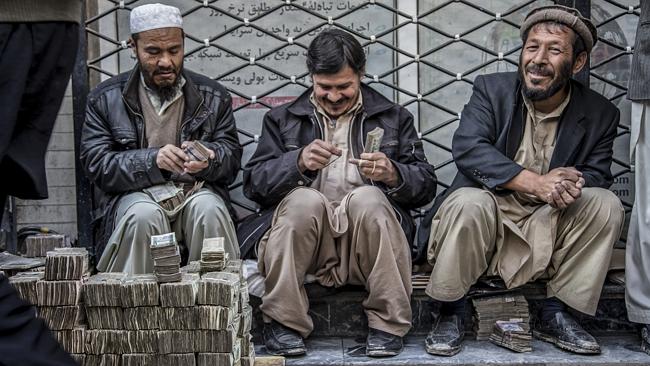The Taliban insurgency may still be raging but the poor state of the economy could pose a bigger threat to Afghanistan’s long-term viability, and huge mineral reserves are unlikely to offer a quick fix.
In Kabul’s Sarayee Shahzada market, moneychangers wave thick bundles of Afghanis, dollars, rupees and dirhams, but the customers are not packing the alleyways like they used to and business is well down on two years ago, AFP reported.
After a decade of near double-digit growth, the Afghan economy has stalled in the last two years, hit by a disputed presidential election and the end of NATO’s combat mission, which formally closed on Sunday.
Now the tricky political and security transitions are joined by an equally tough economic hurdle.
Concern Rises
The fact is not lost on the moneychangers who deal in “hawala” transactions, an informal system of transferring funds internationally seen as a barometer of economic confidence.
Omiad Khan, sitting in his family business in the market, told AFP more money was leaving Afghanistan these days, and less coming in.
“As the withdrawal got nearer, investors in Afghanistan moved their money abroad – they transferred it to Dubai, China, Pakistan, India, Turkey,” he said.
A recent survey of more than 9,000 Afghans by the Asia Foundation, a US NGO, found unemployment and a weak economy were the biggest concerns, beating insecurity and corruption.
The Kabul government is expecting income this year of around $1.8 billion – less than the value of Afghanistan’s opium crop, which feeds the coffers of the Taliban.
Without the $8 billion a year in international aid currently guaranteed until at least 2016, the Afghan government is unable to pay the salaries of the 350,000 soldiers and police on the front line of battling the Taliban.
However, Afghanistan’s NATO decade has brought huge economic growth -- GDP has risen from $2.5 billion in 2001 to more than $20 billion, according to the World Bank, boosted by transport, construction, telecoms and media.
Exports
Agriculture – not including opium – has also boomed to the point where dry fruits have surpassed carpets in the country’s principal exports.
That is good news for Haider Refat, the head of a company that produces and exports raisins, figs, pistachios and the like.
“Before, we only exported to two countries (India and Pakistan) but now we export to around 45 countries,” he told AFP.
Afghan producers are earning significant money sending dried fruits to the Persian Gulf, Australia and Canada, helping create jobs in a country of 30 million where 400,000 young people join the employment market each year.
Haider says that boosting exports further needs more reliable energy supplies, better financing for factories and more promotion of Afghan goods overseas.


